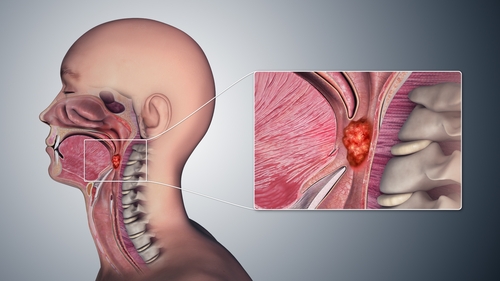
Facing pain while swallowing? Check for oropharyngeal cancer
Pharynx generally known as the throat, that helps in passage of fluid, food, and air into the food pipe or windpipe respectively. Problems with the throat is only realised when it hurts while swallowing food. There are many other complications that can plague our throat, one of them being oropharyngeal cancer.
Oropharyngeal cancer is a form of head and neck cancer in which cancer cells are discovered in the oropharynx, a part of your throat. There are different types of oropharyngeal cancer. The majority is squamous cell carcinoma, which can be classified into two kinds based on HPV testing.
Oropharyngeal cancer associated with human papilloma virus is the most common form and accounts for more than 70% of all oropharyngeal cancer in the US and Western countries. In India, oropharyngeal cancer is mainly caused due to tobacco or alcohol use, and around 20% cases are due to HPV.
Symptoms
Oropharyngeal malignancies are frequently asymptomatic in early stages and causes difficulty or pain while swallowing in advanced stages. The first sign may be usually a lump in the neck. Other signs and symptoms may include: Neck mass, difficulty or pain in swallowing, sore throat, a lump or mass in the back of the throat and ear pain.
Causes
Factors that increase your chances of developing oropharyngeal cancers include: A history of smoking, heavy alcohol use, history of head and neck cancer, history of radiation therapy to the head and neck, being infected with Human Papillomavirus (HPV), especially type 16.
Can oropharyngeal cancers be found early?
For oral cavity and oropharyngeal cancers, there is no routine screening test or program. Nonetheless, many pre-cancers and cancers in these areas can be detected early during routine oral check-ups performed by a dentist, doctor, dental hygienist, or self-exam.
Self-examination: Some dentists and doctors recommend that you inspect your mouth in the mirror once a month for changes such as white patches, ulcers, or lumps. This is especially crucial if you use or have used tobacco, or if you consume alcohol on a regular basis, as you are at a significantly increased risk of developing certain malignancies.
Regular dental check-ups: Regular dental exams that involve an examination of the entire mouth are critical for detecting oral and oropharyngeal cancers early.
Use of special dyes or lights: In addition to a clinical examination of the mouth and throat, certain dentists and doctors may employ special dyes or lights to look for abnormal areas, especially if you are at a higher risk of these cancers. One method uses a dye called Toluidine blue. If the dye is applied to an abnormal location, it will turn a darker blue than the surrounding areas. Another method is to use fluorescent light. Light reflected off diseased tissue appears different from light reflected off normal tissue.
Exfoliated Cytology: If an abnormal region is discovered, it may be evaluated using exfoliative cytology. The abnormal area is scraped using a brush. The scraped cells are transported to a lab to discover if they include pre-cancer or cancer cells.
- By Dr. Rajeev Sharan Senior Consultant, Head and Neck Oncologist, HCG Cancer Centre, Kolkata

